|
[VIEWED 408025
TIMES]
|
SAVE! for ease of future access.
|
|
|
|
|
|
JPEG

Please log in to subscribe to JPEG's postings.
Posted on 04-18-09 9:46
AM
Reply
[Subscribe]
|
Login in to Rate this Post:
1  ?
?  Liked by
Liked by
|
| |
Last edited: 11-Jun-09 09:12 AM
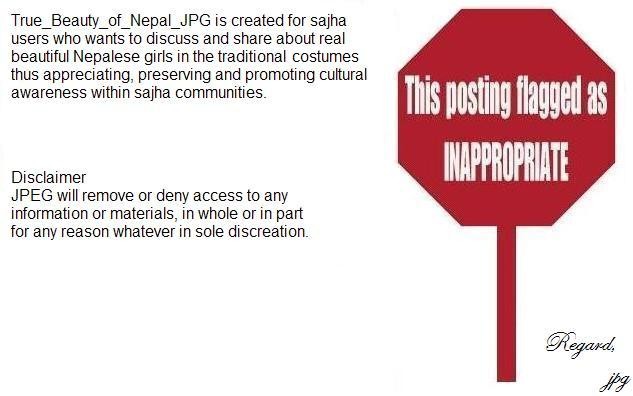
|
| |
|
|
|
|
JPEG

Please log in to subscribe to JPEG's postings.
Posted on 05-18-09 11:30
AM
Reply
[Subscribe]
|
Login in to Rate this Post:
0  ?
? 
|
| |
True_Beauty_of_Nepal@Teej According to the Hindu myth taken up in the Nepalese tradition, the festival of Teej represents the sacrifices carried out by the goddess Parbati in order to marry the god Shiva and have a happy marriage. Shiva therefore ultimately symbolizes all of the men of the country, while the women who follow the example and actions of Parbati can obtain "long life, good health, and well mannered husbands, who respect them and know how to make them happy". All of the Hindu women in the country, during the days of this feast, go on pilgrimage to the temple of the god Shiva and intone songs to forget the sufferings caused by fasting; at sunset, a brief prayer interrupts their mortifications, and they are able to eat and drink. According to sources for the police stationed near the temple of the god Shiva in Pashupati, medical personnel have had to attend to a number of cases of fainting or illness. More than sixty women have been hospitalized: in order to reach the altar of the temple and offer their prayers, the women must face long lines, often waiting for more than four hours.

|
| |
|
|
JPEG

Please log in to subscribe to JPEG's postings.
Posted on 05-18-09 4:35
PM
Reply
[Subscribe]
|
Login in to Rate this Post:
0  ?
? 
|
| |
Gurung Nis beauty How you recognized Gurung beauty from Magar beauty? Answer: Look at the waist.  Gurung ni prefer blue patuki with their dress.
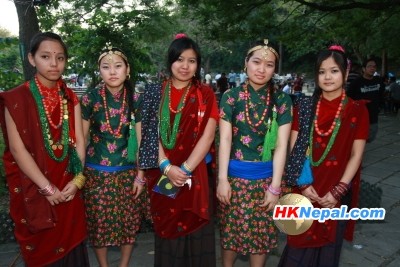
|
| |
|
|
JPEG

Please log in to subscribe to JPEG's postings.
Posted on 05-18-09 4:43
PM
Reply
[Subscribe]
|
Login in to Rate this Post:
0  ?
? 
|
| |
Magar Nis beauty How you recognized Magar beauty from Gurung beauty? Answer: Look at the waist. Magar ni prefer yellow patuki with their dress. 
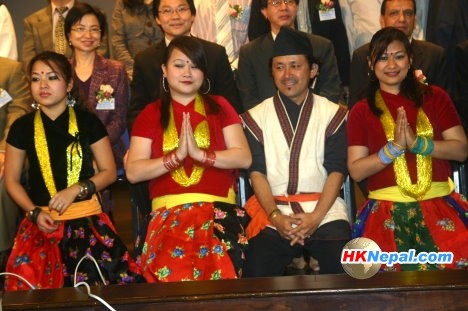
|
| |
|
|
JPEG

Please log in to subscribe to JPEG's postings.
Posted on 05-18-09 6:19
PM
Reply
[Subscribe]
|
Login in to Rate this Post:
0  ?
? 
|
| |
Limbu Ni beauty. How can you distinguish Limbu house from Rai house? Answer: "The only difference, though rather important culturally, between a Limbu and a Rai house is that the latter has a separate room for the household deity. This room is normally located on the top floor though it may also be located at the middle floor. The Rai houses also have separate hearths made of three stones erected vertically and non-Kiratas are not allowed to go or sit near them." ~ By Tanka Bahadur Subba(Politics of culture: a study of three Kirata communities in the eastern Himalayas)
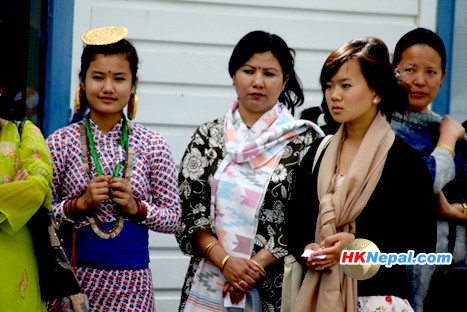
|
| |
|
|
JPEG

Please log in to subscribe to JPEG's postings.
Posted on 05-18-09 8:09
PM
Reply
[Subscribe]
|
Login in to Rate this Post:
0  ?
? 
|
| |
Rai ni beauty. What is the common bond between Gurung, Magar, Limbu and Rai as put forward in Muluki Ain (National Code of Nepal) of 1854 by Jang Bahadur Rana? Answer: The four, Gurung, Magar, Limbu and Rai were classified under Namasine(Unslavable) matawalis (liquor drinkers). "The more prominent of the tribal groups such as the Magar, Gurung, Rai and the Limbu, who lived as agriculturists and soldiers in the army, were accorded the superior rank of the namasine matawali." by Prayag Raj Sharma (The State and Society in Nepal : Historical Foundations and Contemporary Trends) chpt9. Nepal: Hindu-Tribal Interface Hence it is better not to mess with these group("yo char matwali jaat sanga kharab na gara") as quoted by J.B Rana. In other word don't masine(enslave) these group or the consequence would be dire as described by Chandra Prakash Sunuwar. "The Gurkha one of the fearsome warrior in the world history. In west they are known as human being without heart. Once upon time they shaken world fighting alongside with the Britain. They are not tall but famous for bravery, courageous and art of warfare in the world .When they draw the khukuri in battle field and run to cut off the enemies head enemy look at them Like scapegoat{BALIKO TOHOLAYEKO BOKA}. They come and cut off their enemies head. Khukuri used to be deadly weapon of ancient Kiranti. Still always Kiranti people carry their khukuri in east. Without khukuri and without Gurkha they were incomplete absence of one. To be complete should be Gurkha and khukuri.There is myth once draw the khukuri and must draw the blood as well in battle field. During the first and second world war khukuri is considered as unexploded bomb and Gurkha not human but something terror force like dark cloud. Once upon time German emperor KAISAR WILLIUM ||{DUTIYA}said that I am ready to let my dear soldier to fight with any army in the world but when I hear the name of Gurkha soldier I start to tremble from inside the heart. Same thing German president Hitler who shaken world. People think he is reincarnation of Satan had said that if I get Gurkha soldier in my hand without doubt I will destroy the world. General Gillespie who came to attack Nepal later wrote about Gurkha's saying like this RUN THEY WOULD NOT,DIE WITHOUT FEAR,I NEVER SEEN SUCH EXTRA ORDINARY BRAVERY HISTORY OF MY LIFE. There is statue of Gurkha soldier in front of parliament square in London. Professor Sir Ralph Turner MC. Wrote wonderful word about Gurkha soldier saying like this, {BRAVEST OF BRAVE MOST GENEROUS OF THE GENEROUS NEVER HAD COUNTRY MORE FAITHFUL FRIENDS THAN YOU} " Now this is true beauty of Nepal. jpg 
Last edited: 19-May-09 09:22 AM
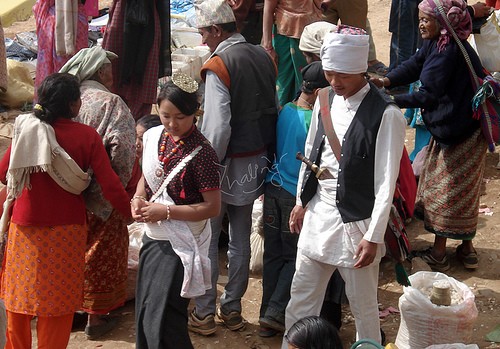
|
| |
|
|
snowfed_river

Please log in to subscribe to snowfed_river's postings.
Posted on 05-18-09 9:04
PM
Reply
[Subscribe]
|
Login in to Rate this Post:
0  ?
? 
|
| |
|
|
| |
|
|
shiva_linga

Please log in to subscribe to shiva_linga's postings.
Posted on 05-19-09 1:08
AM
Reply
[Subscribe]
|
Login in to Rate this Post:
0  ?
? 
|
| |
JPEG sir, could u provide a reliable source on what foreigners(esp.kaiser wilhelm II ,General gillespie and hitler) said about the gurkhas. PS: whom should we be actually proud of ;the gorkhalis (who earned their name and fame as the bravest while defending n expanding their nation) or the gurkhas(who fought and r fighting in any politically motivated wars /operations without thinking about morality or political correctness)?What is ur opinion?
|
| |
|
|
subrath

Please log in to subscribe to subrath's postings.
Posted on 05-19-09 9:14
AM
Reply
[Subscribe]
|
Login in to Rate this Post:
0  ?
? 
|
| |
Very good point SL. I too think British Gurkhas are not true pride of Nepal. They serve the interest of other nation and settle there. I believe the pride of Nepal are the GORKHALIS and all Nepalese community serving for Nepal. चार बण छतीश जात का सझा फूलबारी हों हामी नेपाली (गोर्खाली)
|
| |
|
|
JPEG

Please log in to subscribe to JPEG's postings.
Posted on 05-19-09 10:46
AM
Reply
[Subscribe]
|
Login in to Rate this Post:
0  ?
? 
|
| |
Chepang ni beauty. One of the most backward indigenous nationalities of Nepal, the Chepangs inhabit in the remote and sparse contours, outback and rolling precipices of the districts of Makwanpur, Chitwan, Gorkha and Dhading. They claim that they belong to Kirati group of people. Hence according to the study so far, the scholars have agreed that Chepangs(& Kusundas) resemble Kirantis ( the Rais and Limbus) but their lineage to them is yet to be confirmed. Like the Kusundas, the Chepangs are mostly hunters and gatherers. Their subsistence economy is based on forest resources. They are emerging as horticulturists also. Being landless, 95 percent of them forage for tubers and for food. Today it is stated that they became landless mostly due to lack of documentary evidences to claim land ownership. They also had a system of kipat, communal ownership of land till the first half of the 19th century till this right was taken away during the 104-years of Rana rule. "The most devastating events in this period was confiscation of traditional Kipat land tenure and re-distribution of land to state elites, i.e the ruling class through, Birta and Jagir land tenures and exploitation of indigenous peoples and Dalits through forced free labor such as jahra, rakam, beth and begar."(Regmi 1999) Less then 15 percent Chepangs are literates and almost 90 percent of them are leading life under utter poverty. Hence NEFIN has categorize them in Highly Marginalized Group. These days, there are some projects run for Chepangs, but are not becoming really effective so far. School enrollment ratio of school going children is still very low and drop out rate is very high. The census 2001 has revealed that the population of Chepand is 52,237. The Chepangs have their own language, which belongs to the Tibeto-Burman family. According to Schafer and Toba, the Chepang language is close to the languages of Thami and Hayu (Dhungel, BS2051: 42). The naming ceremony among the Chepangs takes place nine days after the birth of the child. During the ceremony the Chepang shaman (Pande) reads sacred texts over a cock, a hen, thread coloured with turmeric, thin roti (bread) made of maize flour, totala flower, egg, etc and takes them outside for worship. The child and its mother are tied with the thread, and the child is given a name. Alcohol is required during marriage. The boy's side must obtain the consent of the girl's side before or after marriage. The Chepangs mostly bury their dead. The dead body is bathed and new clothes and garlands of flowers are put on the body and wrapped with burial cloth. A box is made of the barks of sal, in which the dead body is kept and buried. Pollution is observed by some for three days and by some for nine and also thirteen days. The death rites are carried out by the shaman (Praja, BS2056). After the recitation of sacred incantations, Chepangs collectively go to hunt and fish. They worship the bows and arrows used in hunting once every year. When i had a chance to meet this group, i found out that almost all the members of Chepang, an indigenous community in Makawanpur district are deprived of citizenship, their birthrights and the land ownership certificates despite their several attempts. In context to the national level, 85 per cent of the Chepangs do not possess citizenship cards, according to concerned sources. Then i remember this quote.
“timi afnai gharma afain baas namaga)â€
(“You don’t ask for a shelter in your own homeâ€) -- Bhupal Rai (2000:4)
Points to be taken: I was wondering what would the fate of "MR-GL"[name given by jpg when studying this group] whom are better known as Lahure communities have been if these communities did not have enlisted in the foreign army?
Last edited: 19-May-09 10:52 AM

|
| |
|
|
shiva_linga

Please log in to subscribe to shiva_linga's postings.
Posted on 05-19-09 1:41
PM
Reply
[Subscribe]
|
Login in to Rate this Post:
0  ?
? 
|
| |
JPEG sir , my question remains unanswered? i just want to hear ur opinion . and for ur kind interest i myself am from a lahure family background
|
| |
|
|
madadkotauko

Please log in to subscribe to madadkotauko's postings.
Posted on 05-19-09 2:27
PM
Reply
[Subscribe]
|
Login in to Rate this Post:
0  ?
? 
|
| |
Wow Subrath, i like ur thinking...all the british Gurkhas serve the interest of the others and settle abroad, then how abt all the people who go abroad for studies and settle there, how abt them...are they working for our country's interest!!! How would u feel abt them.. Do these ppl make u feel like walking wit ur head high...Like u said i agree wit all the fact that the Gorkhalis are the true heros of nepal and we should definately feel proud of them...but plz y do u all label only the Gurkhas as they have deserted Nepal...there are hundreds of others.. And for Shiva linga...i know u asked for the opinion of JPEG...but i would just like to say few words..First all the ppl line up thinking it as a job...n just like any work..where one could either succeed or fail...fortunately gurkhas seemed to excel in it..now few months back..i read a thread on Sajha..where it talked about some Nepali guy getting into NASA..and all the readers were like nepali no nak thulo garyo...Now u talked abt pride...if ppl can take pride in a success of one ppl coming frm the same country..shouldnt u take pride in a success of some group of ppl...i hope u can relate to it... P.S. U said u r frm army background, wat army??? if u r talking abt the british army..then i think u should know more abt it...
|
| |
|
|
subrath

Please log in to subscribe to subrath's postings.
Posted on 05-19-09 3:20
PM
Reply
[Subscribe]
|
Login in to Rate this Post:
0  ?
? 
|
| |
Thanks for the sarcasm madadkotauko. Sarcasms are for winners. And you win. I agree you make a logical point and appreciate for asking how I feel about “how abt all the people who go abroad for studies and settle there, how abt them...are they working for our country's interest!!! How would u feel abt them†but genuinely do you care how I feel??? Well by any chance if you do care than here is how my feelings articulate, just by blaming somebody does not make me/anyone innocent. I am not here to defend any Nepalese Diaspora, and that ain’t my job. Since you asked for my feelings I simply will say I don’t take pride on the British Gurkhas. They could be pride of British but not of Nepalese. However, who cares what I say! No hard feelings bro. PEACE
|
| |
|
|
JPEG

Please log in to subscribe to JPEG's postings.
Posted on 05-19-09 3:30
PM
Reply
[Subscribe]
|
Login in to Rate this Post:
0  ?
? 
|
| |
Namaskar Shiva Linga. Here's an answer to your question. For your reliable source on what foreigners said about the Gurkha, it is all recorded down in the books. There are many books about the Gurkhas in the market. These are some books i have read or is reading. The Gurkhas by Byron Farwell Valour A History Of The Gurkhas by E.D Smith The Gurkhas: The Inside Story of the World's Most Feared Soldiers by John Parker Warrior Gentlemen: "Gurkhas" in the Western Imagination by Lionel Caplan(just finished reading) Essentials of Kirati History by Colonel G.L. Rai-Zimmdar (reading) And regarding your question on " whom should we be actually proud of ;the gorkhalis (who earned their name and fame as the bravest while defending n expanding their nation) or the gurkhas(who fought and r fighting in any politically motivated wars /operations without thinking about morality or political correctness)?What is ur opinion?" Shiva Linga there cannot be any deeds greater than fighting and defending the sovereignty of one's nation. It does not mean this applies only to the soldiers. It applies to every citizens who are able. In short it is the patriotic duty of every citizens to defend one's nation. The Gurkhas on the other hand did not enlist in the foreign army out of goodwill but through their choice. ("hajur duka derai payo" ~ economic hardship). from Warrior Gentlemen: "Gurkhas" in the Western Imagination by Lionel Caplan Somebody has to feed and cloth his family. Surely Nepal government fail to do both these tasks. Then if you still have doubt, you should see the number of Diversity VISA applicants from Nepal every year. Secondly let me ask you how many percentage of Nepali students from USA let alone other countries will return back home upon completion of their studies? Hence every person has the right to look for better life. It's no difference for these "MR-GL" communities. If you folks do not get my message, it's alright too. I did show my grudge against lahure's practices. Only after studying about "MR-GL" people, only did i realize that we others have no rights to generalize them. I don't blame them until Nepal Governement is stable and can provide equal opportunities to every Nepali citizens from all level of life. Hope this answer to your question Shiva Linga ji. Namaste! True_Beauty_of_Nepal
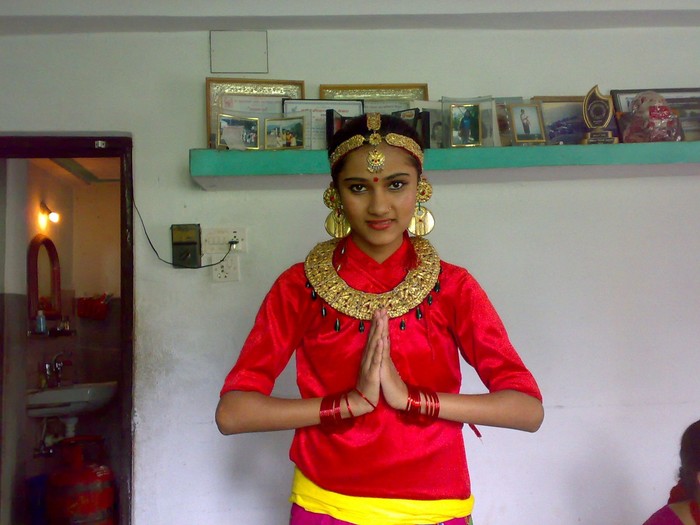
|
| |
|
|
JPEG

Please log in to subscribe to JPEG's postings.
Posted on 05-20-09 1:38
PM
Reply
[Subscribe]
|
Login in to Rate this Post:
0  ?
? 
|
| |
“Photography is truth.†Behold the Nepali beauty.

|
| |
|
|
JPEG

Please log in to subscribe to JPEG's postings.
Posted on 05-20-09 5:33
PM
Reply
[Subscribe]
|
Login in to Rate this Post:
0  ?
? 
|
| |
Tamang ni maichang.

|
| |
|
|
JPEG

Please log in to subscribe to JPEG's postings.
Posted on 05-21-09 10:04
AM
Reply
[Subscribe]
|
Login in to Rate this Post:
0  ?
? 
|
| |
Nepali_Beauty
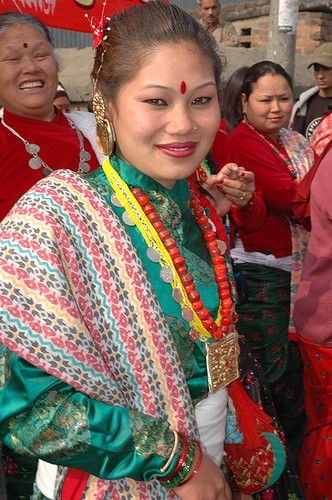
|
| |
|
|
JPEG

Please log in to subscribe to JPEG's postings.
Posted on 05-21-09 11:25
AM
Reply
[Subscribe]
|
Login in to Rate this Post:
0  ?
? 
|
| |
The so call Untouchable Beauty. THE GENESIS OF UNTOUCHABILITY IN NEPAL
There is no record as such from which the authenticity of the origin of the caste system in Nepal can be traced. The difficulty arises because of two interrelated factors: i) the history of Nepal itself, and ii) the heavy reliance on fragmentary and legendary sources to trace the origin and to define the present legacy of the caste system in Nepal. The argument here is that the influence of specific beliefs and contemporary caste behavior in Nepal cannot be simply assessed from those sources of the Vedic and the Mahabharata periods. In this context, it is worth mentioning the classic Hindu tradition-based literature such as the Vedas, Mahabharata, Puranas and Manuusmriti. *It is frequently cited in the texts such as the Rigveda, Mahabharata and the Manusmriti that there were untouchable groups in those days of different occupational categories such as “Chamar†(cobbler), Chandal (who cremated the dead body), “Rajaka†(washer -man) and others (see Human Rights Year Book,1993). Up to today, there is little archaeological or historical evidence to corroborate the timing of those literature, and linking those untouchable groups in the context of the present Nepali Dalit or untouchable population. The sentiments expressed in Hindu fundamentalism in the context of Nepali society start relatively recent in the history of Nepal, i.e., the genesis of caste system can be traced more accurately from the reign of King Jayasthiti Malla in the context of Kathmandu Valley and with the introduction of the Old Legal Code of 1854 in the context of Nepal as a whole. Points to be taken: * The fourfold Hindu class(Varna) divisions are Brahman (priests and scholars), Kshatriya or Chhetri (rulers and warriors),Vaisya ( merchants and traders), and Sudra (farmers, artisans, and laborers). The fifth class are untouchables (outcastes and the socially polluted). The Vishnu Purana indicates that the "chatur-varna" or four class social system was absent in Kirat desha in the East and the Yavanas(Greek) and Kambojas(Iranian), etc. in the West. Hence there wasn't any class, division before in Nepal. In the history of Nepal, the concept of caste became distinct and prominent during the reign of King Jayasthiti Malla (1380-1394). He classified the population of the Kathmandu Valley into 64 caste groups, each with different functional and occupational categories. There was little change in this traditional caste structure until 1854 when the Old Legal Code of Nepal (Purano Mulki Ain) was introduced in the reign of King Surendra Bikram Shah. This Code gave precise definition to the grounds of hierarchy and dictated the norms and behaviors of caste groups in Nepal. According to Sharma (1977:99), this Code might be described as the first proclamation of state authority on all matters concerning the social and religious rights of individuals. This Code organized Nepali caste and ethnic groups into the following categories: i. Tagadhari (castes wearing sacred thread); ii. Matwali (Liquor consuming castes); iii. Pani nacalne choi chtto halnu naparne (castes polluting water only); and iv. Pani nacalne choi chitto halnu pa rne (castes from whom water is not accepted and whose touch requires sprinkling of holy water; or untouchable castes). "Dalit community is economically, socially, politically and culturally the most oppressed and neglected lot in the country" - Pushpa Kamal Dahal "Prachanda", the Prime Minister of Nepal “A man who considers a fellow citizen an untouchable can neither be a civilized man nor a democratic person; he can only be a criminal.†- Pushpa Kamal Dahal "Prachanda", the Prime Minister of Nepal Bride [Sarki] and Groom [Khatri] Photo: Narendra/DWO Inter-caste marriage, a way to go: Now this is true_beauty_of_Nepal. And when we fully eradicate this system of Varna(class) from Nepal, it will no doubt become absolutely TRUE_BEAUTY_OF_NEPAL
Last edited: 21-May-09 12:15 PM
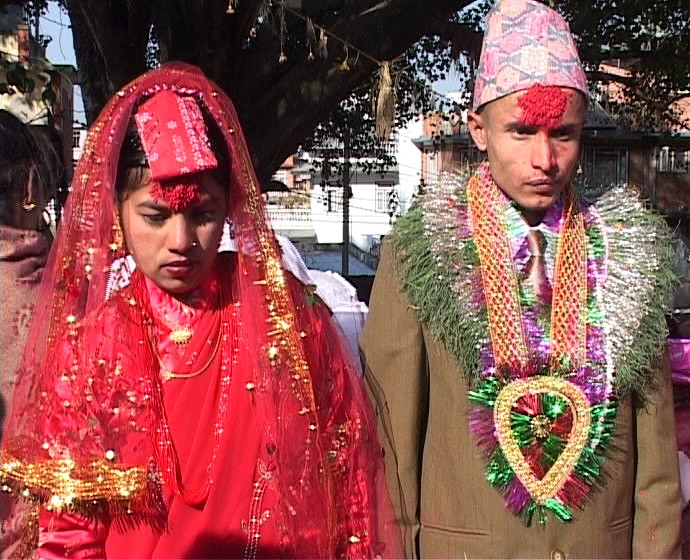
|
| |
|
|
Mr. Hyde

Please log in to subscribe to Mr. Hyde's postings.
Posted on 05-21-09 11:39
AM
Reply
[Subscribe]
|
Login in to Rate this Post:
0  ?
? 
|
| |
Nepal will achieve a varna-less society when the head priest of the Pashupatinath temple is/was born in an untouchable class.
|
| |
|
|
JPEG

Please log in to subscribe to JPEG's postings.
Posted on 05-21-09 5:12
PM
Reply
[Subscribe]
|
Login in to Rate this Post:
0  ?
? 
|
| |
Classic Newar ni beauty_JPG “A Newar has been defined as an inhabitant of the Valley of Nepal who speaks Newariâ€
John K. Locke who did a detailed research on Newari culture; especially through his book “Karunamaya†describing the cult of the chariot festival of Nepal has rightly stated: “The original inhabitants of the Valley are Newars who still comprise about half of the population of the Valley. Here also there has been a meeting of races and cultures. The Newars have been active traders with the plains and with Tibet since the beginning of their history, and the Valley has provided a new home for refugees from India from the time of Buddha and the rise of the Mauryan Dynasty right down to the Indian Mutiny in 1857. While the refugees from north and south tended to settle on isolated hillsides and in the shelter of inaccessible valleys where, until the push for development and modernization of Nepal, they remained closed units, cut off from their neighbors of a different race and culture on the near-by ridges and in the valleys beyond.†During the early periods the newcomers from north and south were integrated into the Newar society of the valley, they became Newars in process. This further contributed to the cultural fabric of Newar society. Therefore, “Newar†is not an ethnic term but a cultural term denoting the very rich and complex culture of the society of the valley. In fact, the Newars were a ‘nation’ apart, until they merged into the larger Nepal formed during the eighteenth century by a large and powerful group that came from outside Kathmandu Valley. These later arrivals, the Shahs of Gorkha and other Chhetris and Brahmans, dominated the valley in short order and set about to unify the country politically, while the Newars underwent a significant process of change. Today the term ‘Newar’ embraces people of both Mongoloid and Mediterranean physical types who speak both Nepali, an Indo-Aryan language, and Newari, a Tibeto-Burman language which includes some half a dozen dialects. Because of the complexities in the composition of Newar society, scholars in the past have developed various interesting theories about their origins. The Newari language, although greatly influenced by Sanskrit, is still distinctly a Tibeto-Burman tongue. Although it uses Devanagri script today, it does have its own script as well. Sylvain Levi put forward the theory that Newars migrated to Nepal from “regions north of the Himalayasâ€. Some other scholars suggest that the Newars may have originated in South India, with ties or distinct similarities to a Hindu community on the Malabar Coast called the Nair, or Nayar. This theory was probably based on the mere phonetic similarity of terms that describe them and one or two other coincidences of customs, not believing either of these theories complete. Christoph von Furer-Haimendorf draws his own conclusion that “the bulk of the Newar people had been settled in the Nepal Valley since prehistoric times.†Regmi, however, speculates that the early Newars may have an ancestry connected with both the Kiranti and the Lichhavis, one-time rulers of the Nepal Valley. During the course of history a considerable amount of cultural influence has been exerted on the Newar culture by various immigrant groups. These immigrants were ultimately absorbed into the Newar community. Of all the people who migrated to the Nepal Valley, the Malla Kshatriyas of India were the most distinctive. Since most agree to the fact that the valley was drained by Manjushree who definitely had come down from north, it proves to the fact that the first settlement in the valley have been the Mongolians. There must have been other migrants from the south penetrating the huge jungles armed with malaria, settled in the valley or at its surface at the least which eventually led to a mixture of dialects and varied customs as Manjushree and his followers is believed to be a part of early Buddhism that represents compassion and definitely not. Some of the Newar Jaats of Kathmandu, particularly the Prajapatis(KumvahkaraKumharaKumhale), Maharjans, Dongols, Nayos, Tepehoys, etc., have been said to be descendents of the Kiratas. ~Prof. Sudarshan Raj Tiwari(The Temple of the Kirata Nepal) The similarity in place names of Tistung-Palung-Chitlang to the south of Chandragiri hills, now inhabited by the Hale and Gwa caste groups of Newars, and Chepang area, as well as the linguistic relations between the Chepangs, Newars and Kirats indicate they could have common ancestry and could be descendents of the Nagas. The Newar name for Patan, Yala, is believed to originate from the Kirat king Yellung or Yalamba, the alleged founder of the dynasty and the city. (Tiwari,2001) In due course of time, the civilization must have established a common name and hence the beginning of Newar civilization is estimated to be around the 6th century B.C. when the Kiratas, Kolliyas, Salmaliyas, Sakyas and Lichhavis combined to form the earliest known group of the Nepal Valley. The Mallas ruled from the thirteenth to the eighteenth century, when they were finally replaced by the Shah Kings. The Mallas brought with them the influence of a Hindu socio-religious base. To an otherwise non-caste country they introduced the caste system after the fashion of the Indian Hindu caste hierarchy followed by the Indian immigrants to Nepal. Today, the bulk of the Newar population is concentrated inside the valley in the large cities of Kathmandu, Patan, Bhadgaun, Kirtipur and half a dozen smaller towns. In addition, a fair number of Newars have settled in villages and markets outside Kathmandu Valley during the course of the last two centuries.
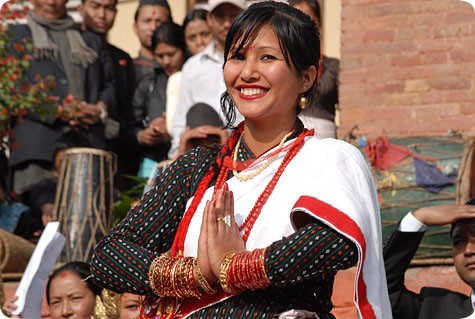
|
| |
|
|
JPEG

Please log in to subscribe to JPEG's postings.
Posted on 05-22-09 8:47
AM
Reply
[Subscribe]
|
Login in to Rate this Post:
0  ?
? 
|
| |
Miss Nepal. “Pink is the color of romance and a friend tells me that the girl with the pink dress at the party is the one who is selected for each danceâ€

|
| |
